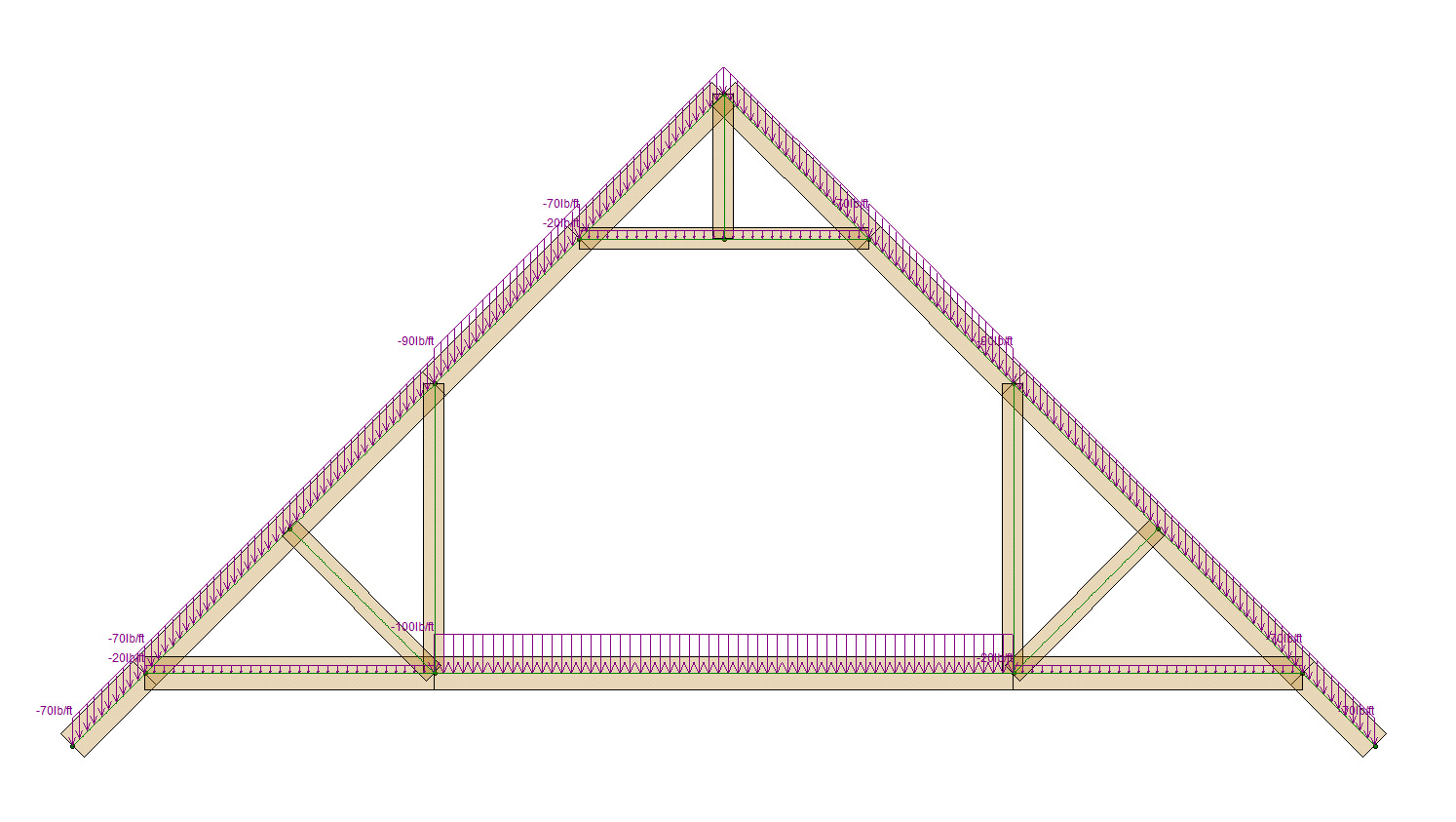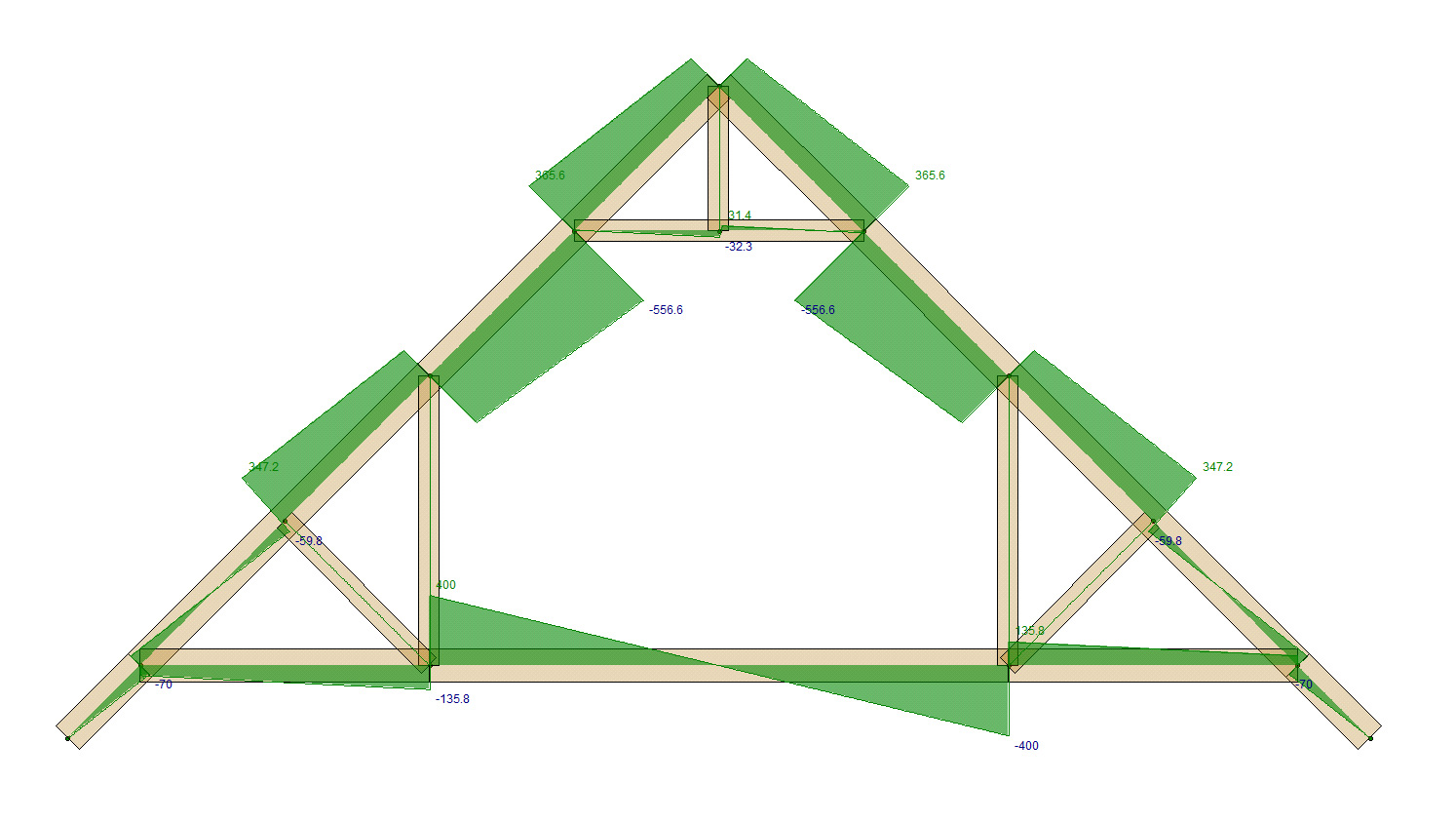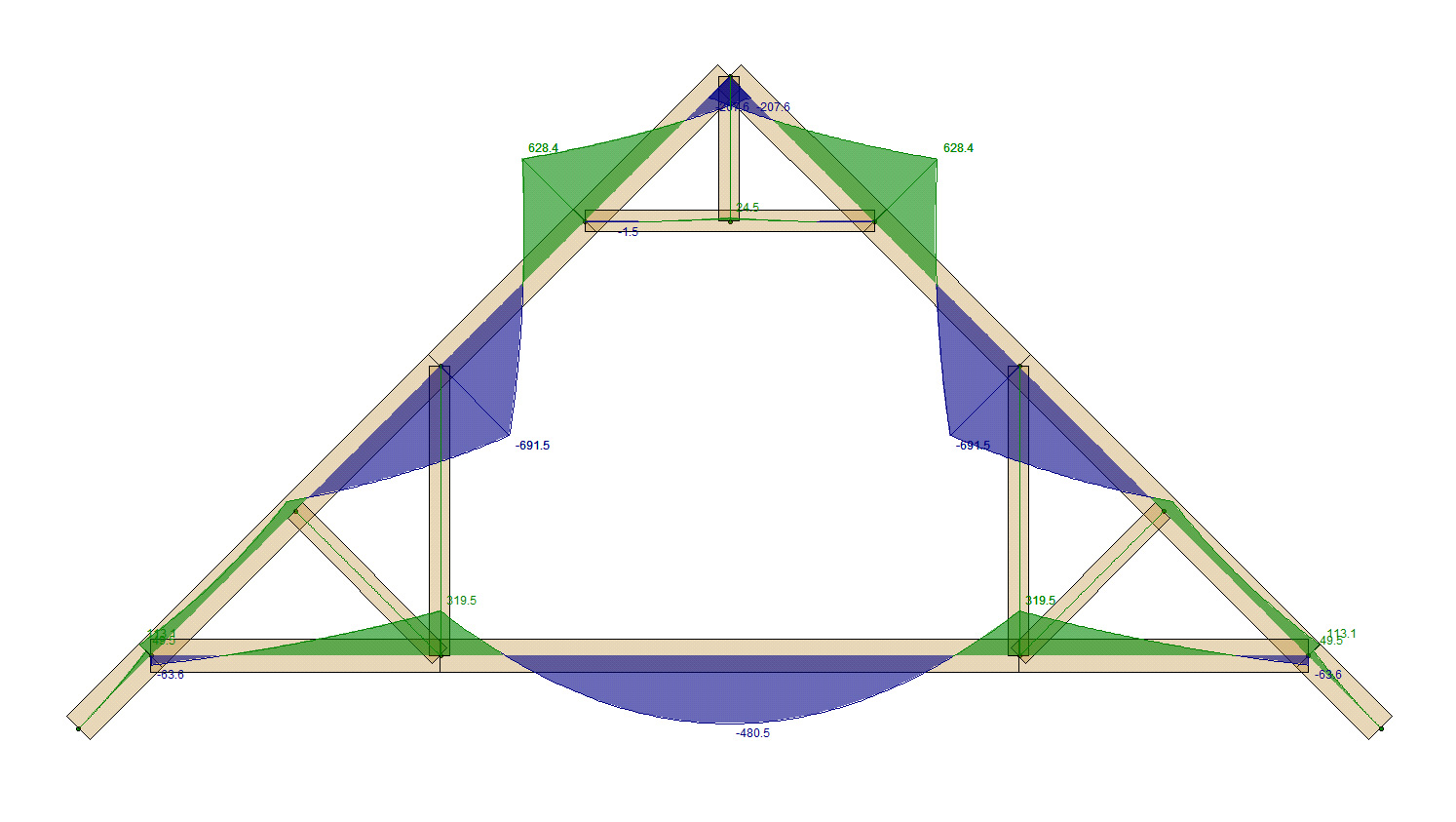@a2mfk
My original schooling was in mechanical engineering but I switched careers a couple years ago to the structural field, it has been challenging but definitely worth the ride.
I'm not sure what you mean that this post exposes my lack of knowledge of trusses. I challenge you to try and solve this particular truss by hand, the first thing you will determine is that it is an indeterminate structure and your method of joints or sections just does not work in this case, it can't be solved by hand. Matrix analysis is the only way to solve this truss.
Last year I programmed a matrix analsys program into my fledgling truss designer here:
(Fink truss only)
The results match up perfectly with my output from STAAD and RISA so I'm pretty confident I at least got that part of the structural analysis right.
I just received my copy of ANSI TPI-1 2014 in the mail yesterday and was pleasantly surprised to see that there are not many changes from the 2007 standard. My truss designer is at this point an academic exercise in trying to implement all of the necessary checks per the TPI 1 in regards to lumber and plate sizing, still very much a work in progress.
My next challenge it to try and add in a rudimentary attic truss.
I know that I am recreating the wheel when you consider that the truss giants (ie. Mitek, Eagle, Simpson, ITW) already have software that does this sort of analysis and probably a lot better than mine does. The problem is that as an engineer you will never gets your hands on their software unless you work for a truss company or are an employee of the plate manufacturers.
I am not an SE but then how many engineers that do residential structural engineering are? In the state of Washington and Utah and SE is only required for certain structures so what I do is perfectly within any legal or ethical realm.
A confused student is a good student.
Nathaniel P. Wilkerson, PE









![[bigsmile] [bigsmile] [bigsmile]](/data/assets/smilies/bigsmile.gif)